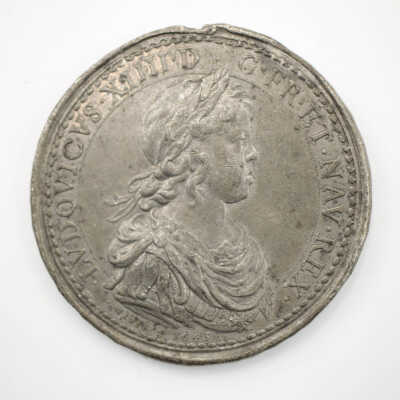Commemorative Coin
Name/Title
Commemorative CoinEntry/Object ID
2017.3.8aDescription
Silver-colored metal coin with a bust of a four-year-old King Louis XIV on one side and his mother, Anne of Austria, the head of the regency council on the other. Louis is shown draped in Roman-style clothing with long, curly hair and a laurel crown. The words "G. FR. ET. NAV. REX. LVDOVICVS. XIII. D." ring the edge. Anne is showing wearing Elizabethan clothing, including a tight bodice, wide fall collar, and three-pointed hood with a cap beneath and veil above. The words "ANNA. D. G. FRET. NAV. REG." ring the edge.Context
French coin minted in 1643 upon the death of Louis XIII and ascension of Louis XIV to be traded with indigenous Americans.Acquisition
Accession
2017.3Source or Donor
Wiseman, Frederick M.Acquisition Method
GiftCredit Line
Gift of Frederick M. WisemanMade/Created
Date made
1643Place
City
ParisCountry
FranceContinent
EuropeEthnography
Cultural Region
State/Province
VermontCountry
United States of AmericaContinent
North AmericaCulture/Tribe
Innu
Native American, First Nation

